Posts In: Development
22 March 2024
New Tools, Tooltips, and Improvements!
Greetings, 👋
Welcome to another progress update! As always, we’ve got some delicious news to share from our latest development sprint.
Over the last two weeks, our work covered functionality and tooltip implementations, extensive localization, and User Interface improvements.
Before we get into those details though, please meet one of your potential workers, the radiant Olga.
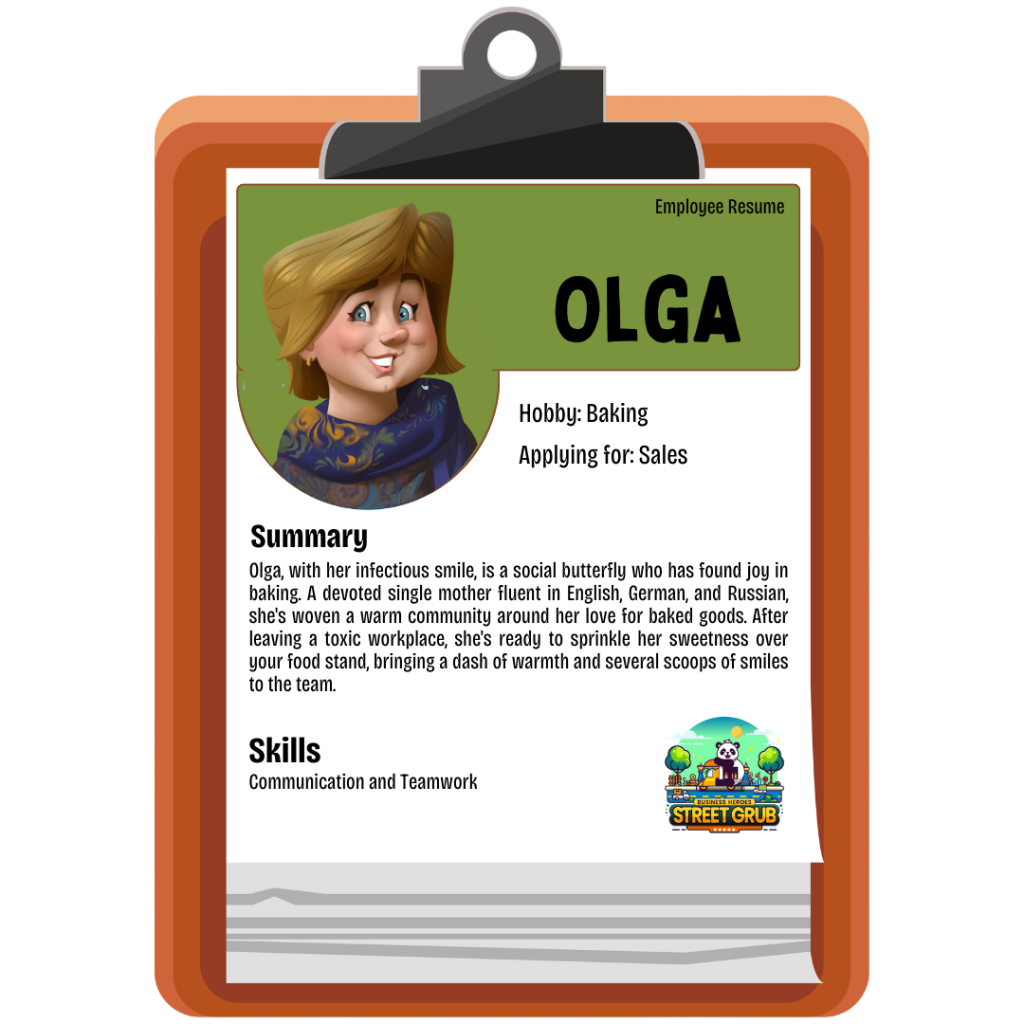
Now, moving on to what’s new with the game 😎
Tooltips: Clarity at Your Fingertips💡
Or should we say, pointer tips? 🖱️😆
So, we rolled out more tooltips across the vehicle upgrades, customer feedback, and recipe management sections. Now, when you hover over an option, you’ll receive immediate, clear insights.
Whether it’s improving your food truck and recipe or understanding customer feedback, you’ll spend less time guessing and more time doing.
The Pricing Survey is Live! 🎉
Remember the Pricing Survey? It’s fully operational, providing valuable data on customer price sensitivity.
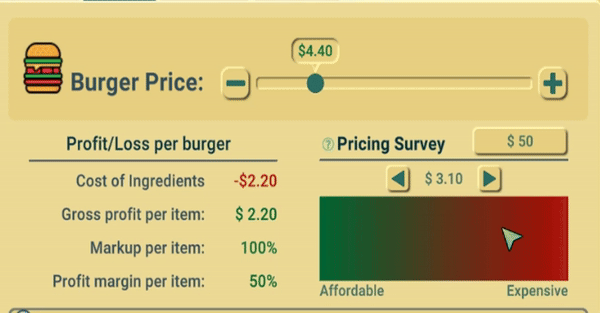
This tool is your strategic asset in setting competitive prices that maximize satisfaction and profit. 😉
UI Improvements for Fluid Gameplay 📐
Attention to detail is crucial in designing strategy games, especially with the User Interface. Recognizing this, we refined the alignment and layout of several elements across the Ordering, Pricing, Inventory, and Recipe User Interfaces.
We also conducted content reviews to improve accessibility for a wider audience range. Beyond enhancing its aesthetic coherence, these adjustments improve the overall usability of the game, making decisions more intuitive.
Spotlight on the Ordering Section ✨
The Ordering section is popping! Thanks to new visual effects (VFX) and improved alignment for a more engaging look and feel.
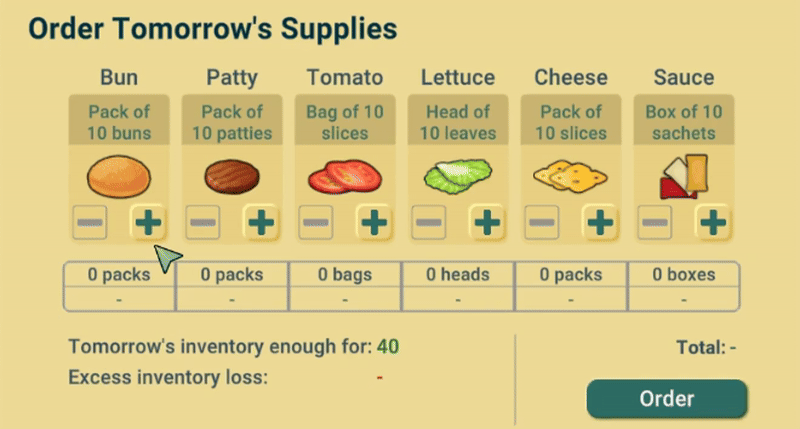
Localization Efforts 🌍
Our localization setup continues to progress nicely. This sprint saw us translating and adapting district hover menus, worker narratives, and all vehicle upgrade-related elements.
The workers’ names and stories, in particular, presented a fascinating case as it wasn’t just a linguistic task but also one of cultural adaptation to ensure meaning is preserved across languages.
And that’s a wrap for today!
As always, we’d love to hear your thoughts on these and any other improvements.
Reply to this email 📧 or chat with us on Discord. 💪
Cheers 🥂
Don’t forget to Wishlist the game if you haven’t!
Live Long and Prosper 👋,
Kunal & team
Follow For More
8 March 2024
Explore New Customizations & Smoother Navigation
Greetings, 👋
It’s great to catch up again! This episode’s updates are about enhancing your experience and giving you more control as you build your business.
Let’s get right into it, shall we? 😉
New Menu for Stands🚚
You can now access various stand management operations directly from the environment view. The new Stand menu allows quicker access to all essential functions and shows inventory available for sale the next day.
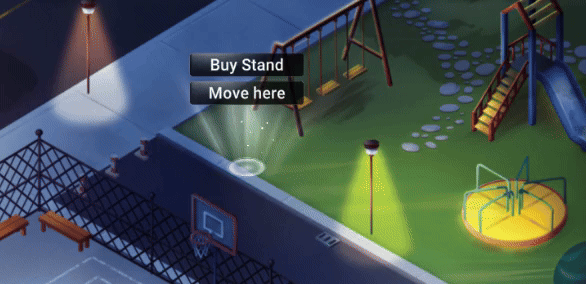
Move View for Empty Spots 📍
To enable swift stand placement, we’re adding a feature that allows you to move to an empty spot by clicking it. Previously, you could only move your stands by clicking on them or using the move function on the User Interface.
Now, you can start the stand movement process by clicking on an empty spot in the environment.
Bug Fixes & Tooltips 🐞
The latest bug fixes include an update ensuring the weather dropdown accurately reflects the day’s changes.
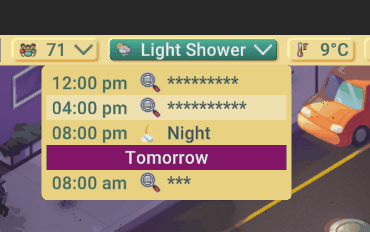
Also, issues that once affected the Worker screen’s performance have been resolved, and we’ve enriched the vehicle upgrades section with detailed tooltips, ensuring you have all the information you need right at your fingertips.
Finally, you know we won’t wrap this up without introducing you to one of your potential workers, right?
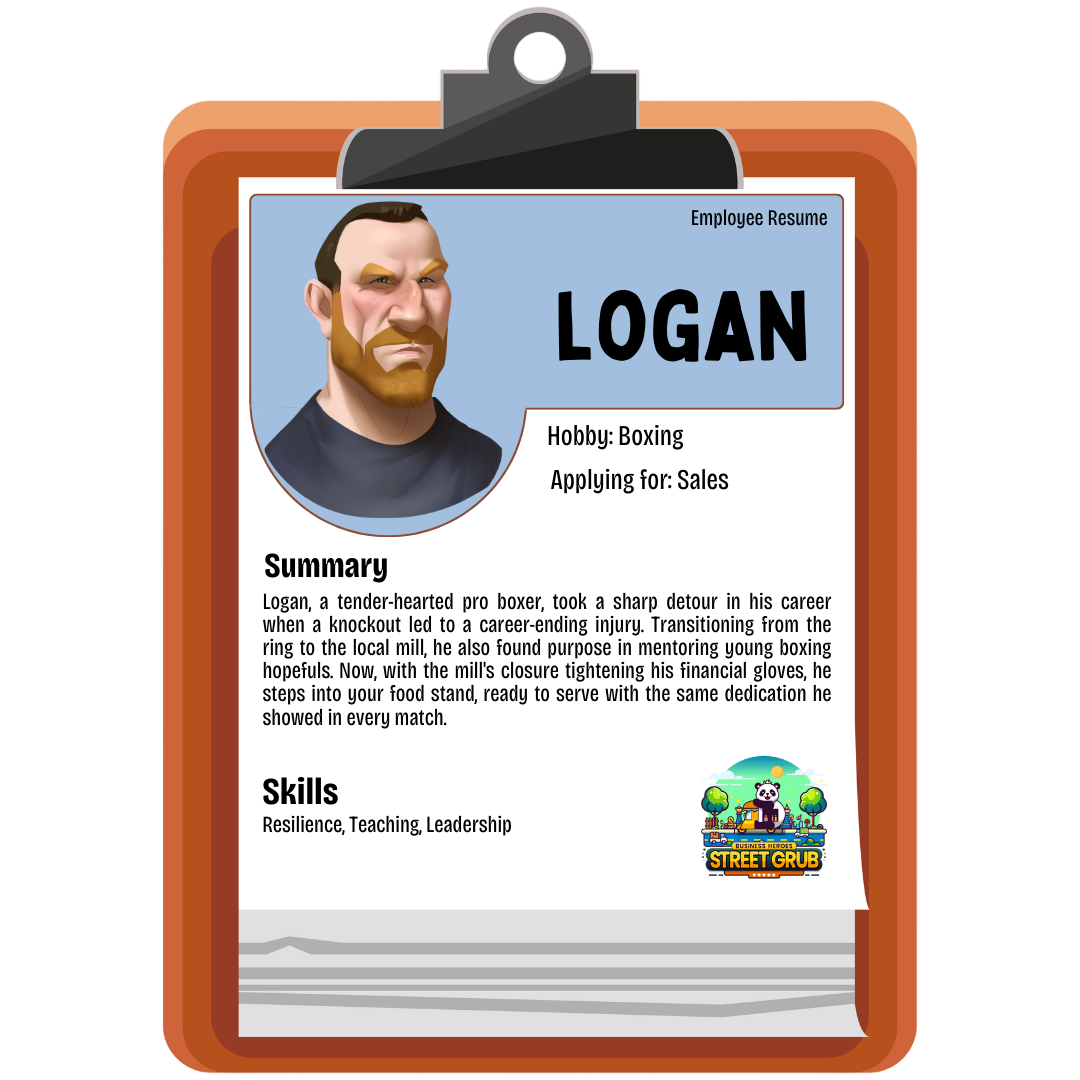
And that’s a wrap for today!
As always, we’d love to hear your thoughts on these and any other improvements.
Reply to this email 📧 or chat with us on Discord. 💪
Cheers 🥂
Don’t forget to Wishlist the game if you haven’t!
Live Long and Prosper 👋,
Kunal & Team
Follow For More
23 February 2024
Introducing Sun Rays, Improved Worker Placements, & More
Greetings, 👋
Hope you’re doing fantastic! The last few weeks have been a whirlwind, from implementing enchanting visual effects to improving the vehicle upgrades section; we can’t wait to show you all the good stuff.
But before we take a closer look at what’s new and why it matters to you, it’s our pleasure to introduce you to the vibrant and imaginative Hinata:
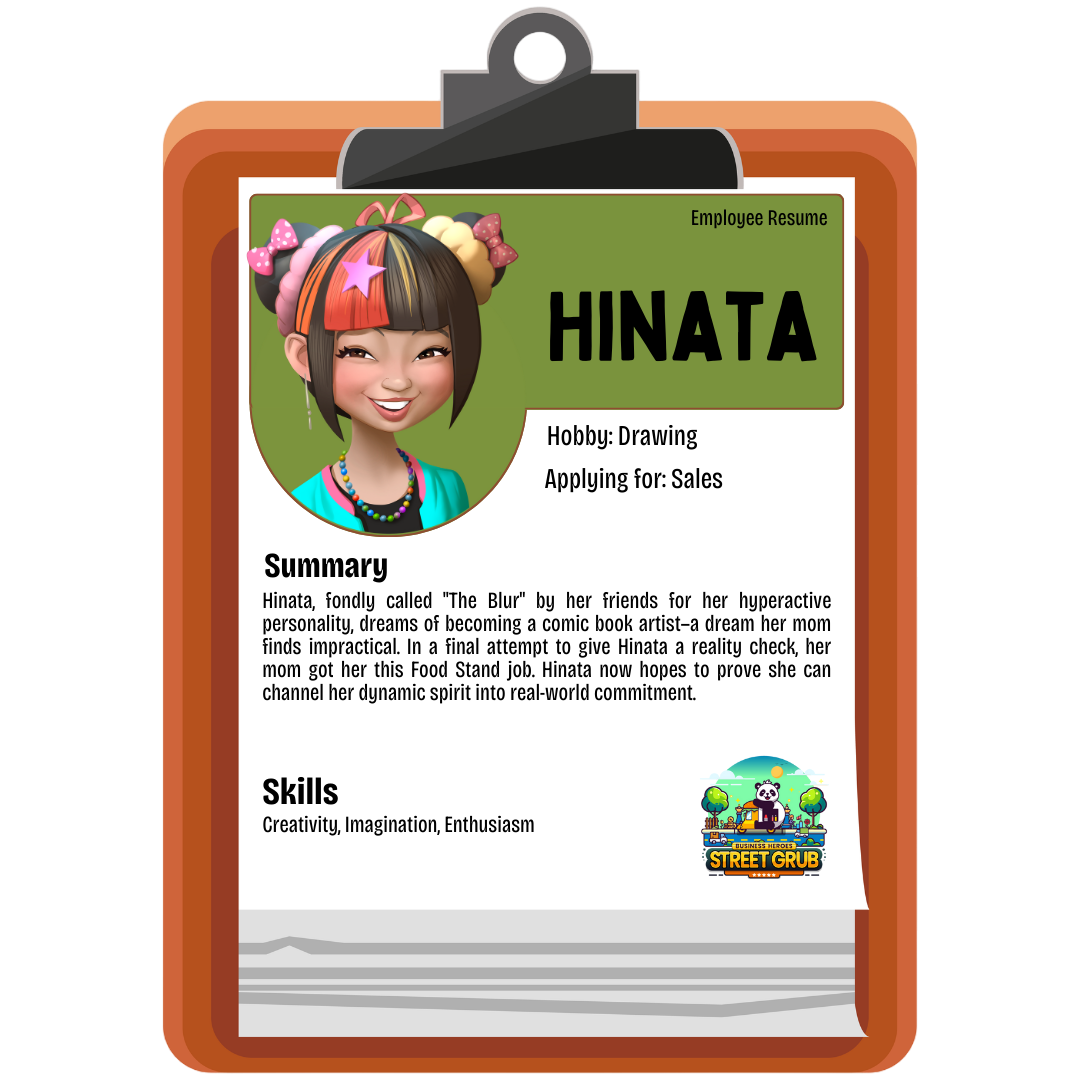
Sun Rays to Guide the Way 🌞💫
We’ve added sun ray VFX to show that stand spots are interactive. This beautifies the scene and subtly signals to players, seeing the environment for the first time, that they can click the spots to purchase and set up new stands.
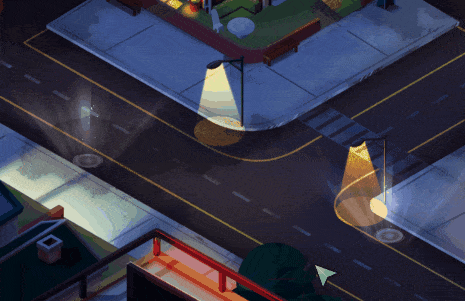
Improved Overlay for Larger Stands 🚚
We’ve improved the night overlay for larger stands to enhance your nighttime experience when you own those stands.
Previously, the larger stand sprites were incorrectly placed over some objects at night, disrupting the overall look of the night view. The improved overlay places each element correctly, ensuring a visually coherent nighttime atmosphere.
Worker Placement Updates 🧍
A noticeable adjustment has been made to the positioning of stand employees when they’re serving customers.
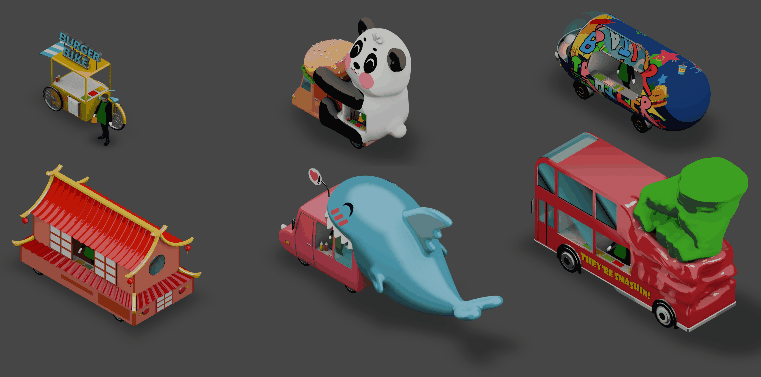
Before, we had workers stationed outside all stands, regardless of context. This broke the immersion we were striving for. Now, except for the burger bike stand, you’ll find all workers properly placed inside their vehicles while serving.
Vehicle Upgrades 🚚🛠️
Tweaking the vehicle upgrades system for better clarity and ease of use was another area we focused on.
You’ll find the names and costs of upgrades listed right beside each option, along with improved visuals in the upgrades area.
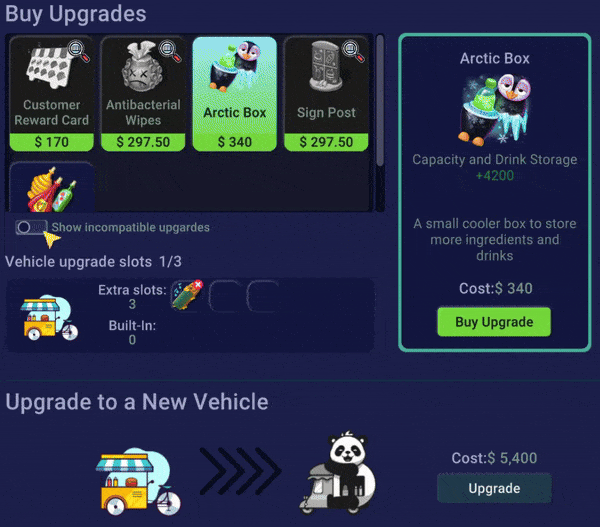
We believe these changes will simplify the planning/acquisition of your next upgrade.
We’re eager to hear what you think about these updates. Do the god rays add that touch of magic we hoped for?
Reply to this email 📧 or chat with us on Discord. 💪
And that’s a wrap for today. Cheers 🥂
Don’t forget to Wishlist the game if you haven’t!
Live Long and Prosper 👋,
Kunal & Team
Follow For More
9 February 2024
Festivals, Hover Menus, and Bug Fixes 😆
Greetings, 👋
As we turn the calendar to another month of development, we’re excited to share the latest updates on our journey.
Lunar New Year Festival 🥳
First off, we are pumped to announce our participation in the 2024 Lunar New Year Festival on Steam China, all thanks to Hawthorne Games!

Don’t miss this great opportunity to check out some of the best games coming out of the region.
Meet the Workers
Keeping the introductions rolling, this week’s spotlight is on Rajesh, another potential worker in your food truck business.
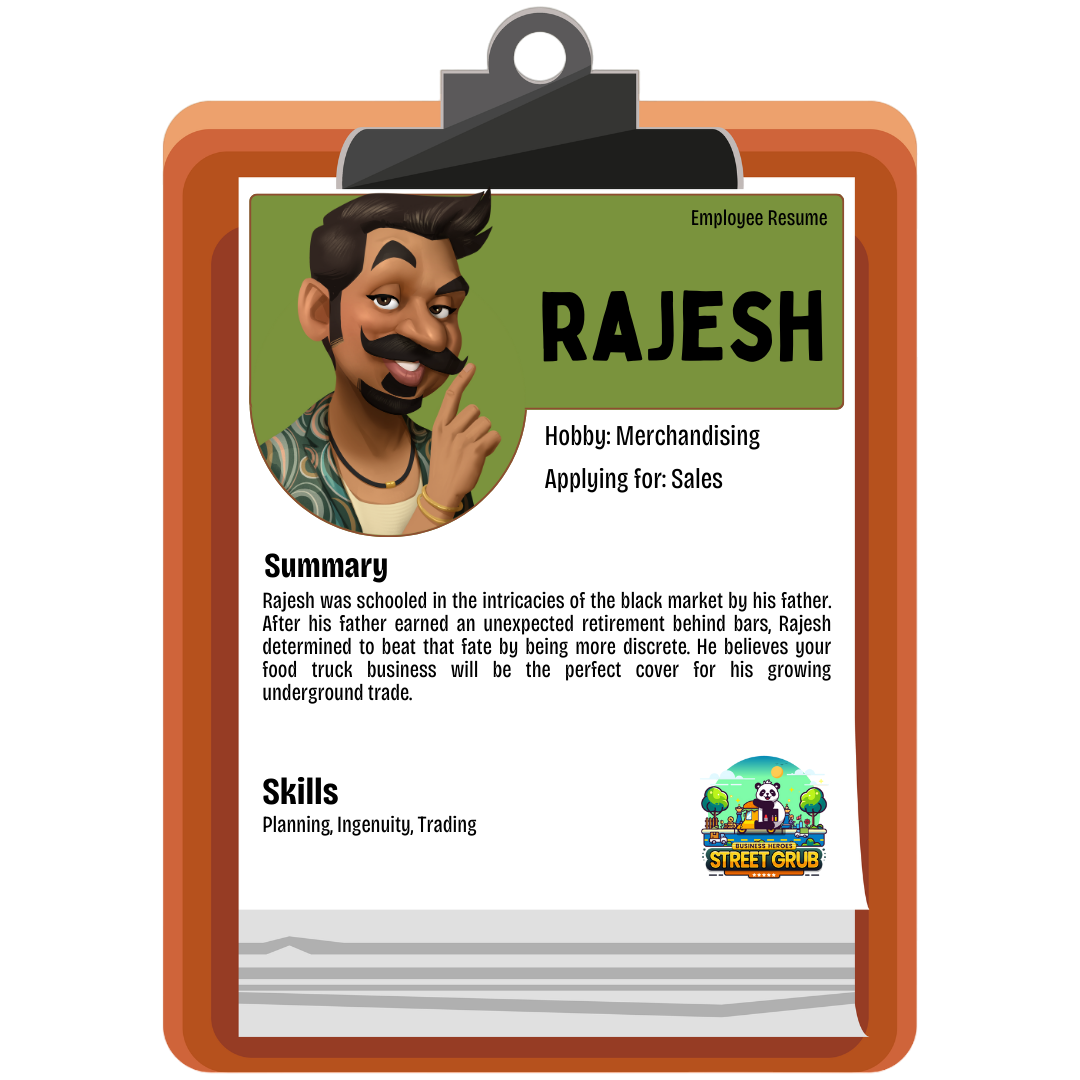
Hover Menus
Our latest implementation of hover menus helps to showcase more data in a visually appealing and easy to digest manner.
Now, without clicking into a locality, you can see important information about the locality and your stands, like the population size of the main segment, income earned by your stand, and lots more.
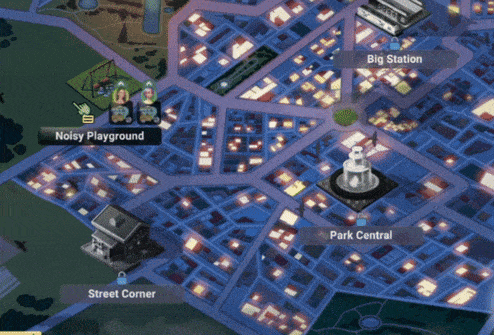
To manage visual load, many data points will be hidden by default, only revealed when you hover on their related icons.
Top Bar & Pathing Improvements 🚶
Some improvements we made to the top bar and customer pathing include:
- Increased avatar and locality icon sizes.
- Animated weather and temperature buttons.
- A new dropdown menu for the population.
- Better differentiation between current and forecasted weather in the weather dropdown.
- Improved customer pathing to prevent customers “walking through” stands.
Bug Fixes 🐛🔨
During the week, we caught a bug that caused a stand’s inventory and cash balance to remain fixed while it raked in sales.
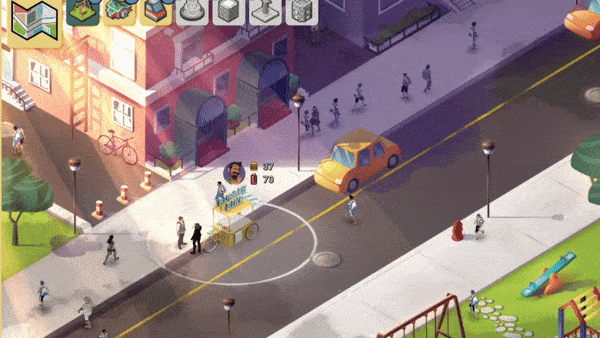
Upon digging further, we discovered the sneaky bug was linked to our latest feedback updates. We’ve fixed it, and business is right back on track!
Before we wrap this up, I must say we’re enjoying the Strategy/Management/Tycoon demos in Steam Next Fest.
News Tower and, of course, the wildly anticipated Millennia have particularly caught our eye. What about you? Have any demos stolen your heart yet?
Share your top picks and why they stood out to you. We’d love to hear all about it.
Reply to this email 📧 or chat with us on Discord. 💪
And that’s a wrap for today. Cheers 🥂
Don’t forget to Wishlist the game if you haven’t!
Live Long and Prosper 👋,
Kunal & Team
Follow For More
26 January 2024
Workers, Pricing, and Perfect Ingredients 😉
Greetings, 👋
Welcome to your first progress update of 2024! For those having a cold January, 🥶 we’ve got you covered with some hot updates.
But before that, we thought it would be great to introduce you to some potential stars of your food truck team. 🧑🏭
Here’s Mi-Cha:
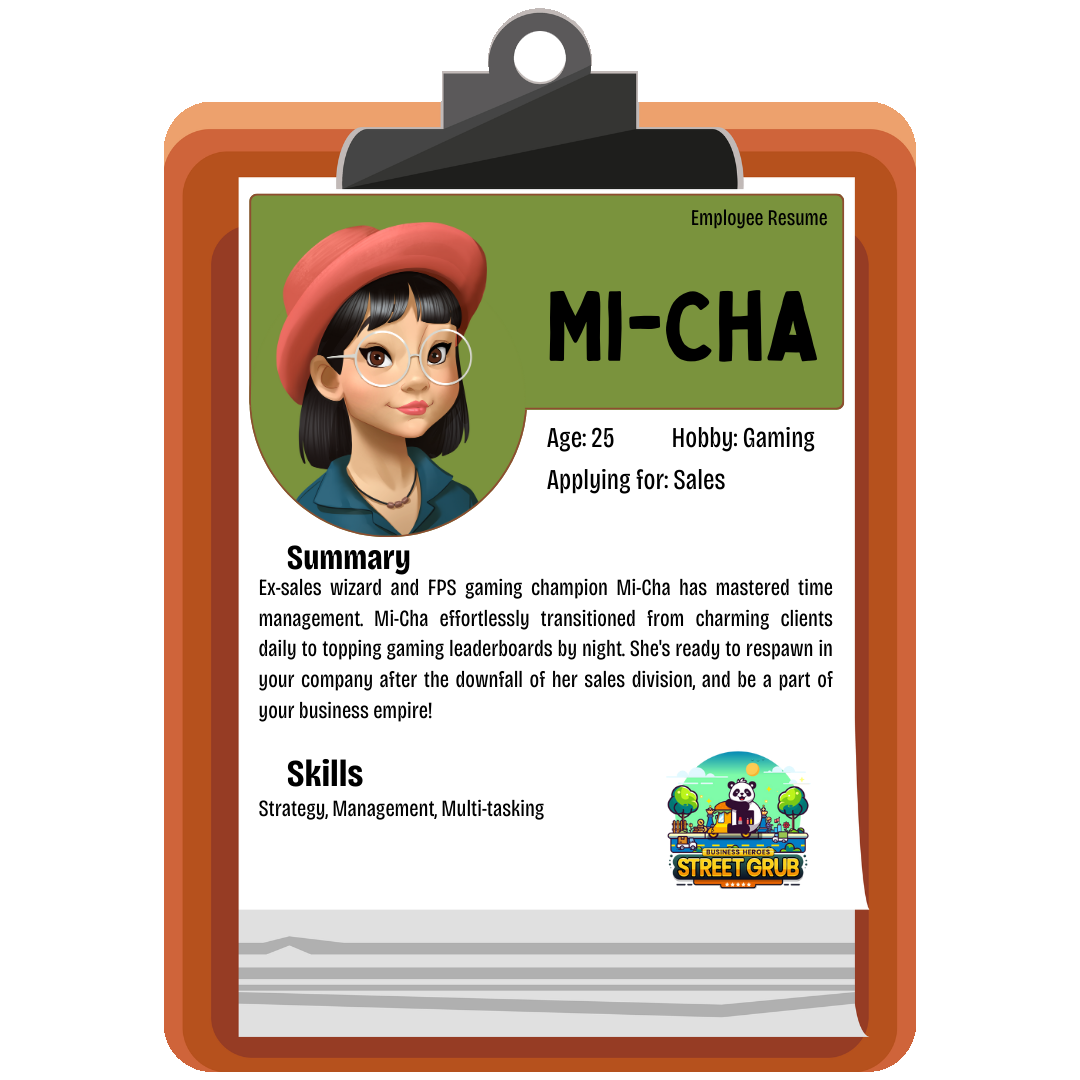
Now to the dev stuff. 😁
We started the year with improvements to the product management, feedback, and environment sections.
These are some of the latest improvements:
Pricing Survey 💵
Discovering what your customers are willing to shell out for burgers 🍔 and drinks 🍸 just got less complicated.
The pricing survey is a researchable tool you can use to find out how likely your customers are to buy your burgers and drinks at current prices.
In case you missed it, we took a detailed look at purchase probability in this episode.
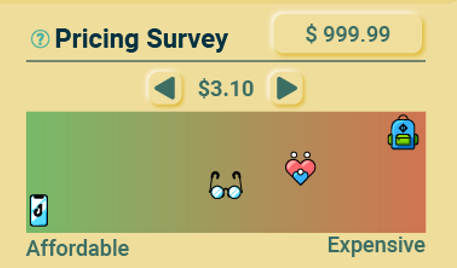
Available once daily, it’s a pay-per-use tool that can give you a fair baseline for your pricing before you hit the streets.
Cold Storage & Expiration 🧊
We’ve tweaked the cold storage and expiry functions to simplify ingredient management.
Now, expiry 😝 only occurs when there’s no cold storage.
In the latest design, just patty and cheese will expire when cold storage is unavailable.
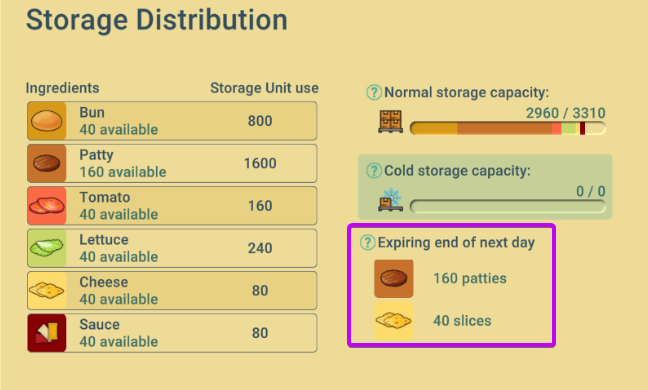
When stored normally, patty and cheese expire after one day. But with cold storage, they stay fresh indefinitely.
Perfect Ingredient Feedback 👍
Many play testers felt like mad scientists trying to figure out the perfect recipe during our last tests.
Not knowing which ingredient was okay after modifying their recipe certainly didn’t help.

Well, the guessing game is over! 🎉
Perfect Ingredients Feedback is our response to your requests. Now, when you unlock this feature, customers will tell you when an ingredient amount in your recipe is just right.
This makes it easier to perfect your recipes and satisfy customers.
As always, we’d love to hear your thoughts on these updates! Reply to this email 📧 or chat with us on Discord. 💪
And that’s a wrap for today. Cheers 🥂
Don’t forget to Wishlist the game if you haven’t!
Live Long and Prosper 👋,
Kunal & Team
Follow For More
15 December 2023
Feedback, Tooltips, and Weather Improvements
Greetings, 👋
Welcome to your penultimate progress update for the year. 🥂 The final one will drop on Friday, the 29th.
Feedback Improvements
We are opening today’s episode with improvements to the feedback system. Remember the old layout?
Feedback from the playtests pointed out difficulties in reading the text, matching comments with the correct stand, and identifying the most recent feedback.
We’ve improved it for better clarity and visual appeal. The latest design shows the stand, locality, and customer segment with icons instead of text.
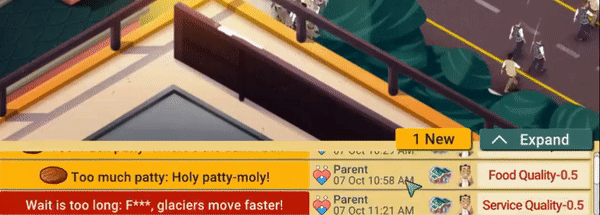
We also added a new feedback counter, so it’s easier to identify the latest feedback.
Food and Service Quality feedback from each customer is now clipped together to reduce information overload when scrolling through the notifications.

Tooltip & Weather Updates
While implementing the tooltips, we added new cursor designs for items on the UI. Items with a tooltip now show a text box on hover, while clickable items show a pointing hand.

Finally, Weather Forecasting has become an exciting new feature you can unlock through research. Initially, you’ll have access to the current weather conditions.

As you progress and research this feature, you’ll gain the ability to see future weather forecasts.
We’d love to hear your thoughts on these updates! Reply to this email 📧 or chat with us on Discord. 💪
And that’s a wrap for today. Cheers 🥂
Don’t forget to Wishlist the game if you haven’t!
Live Long and Prosper 👋,
Kunal & Team
Follow For More
1 December 2023
Tier 1 Research and Pathing Updates
Greetings, 👋
We’re back, and we’d like to welcome you to the most wonderful time of the year! ❄️🎄
The last two weeks saw us implementing the research system and trying out some new spot and pathing changes.
Research(ables)! 🎁
Quite a few of the tier 1 items in the research tree have now been implemented. While it’s still in the early stages and looks a bit bare bones, it’s fully functional and ready for action.
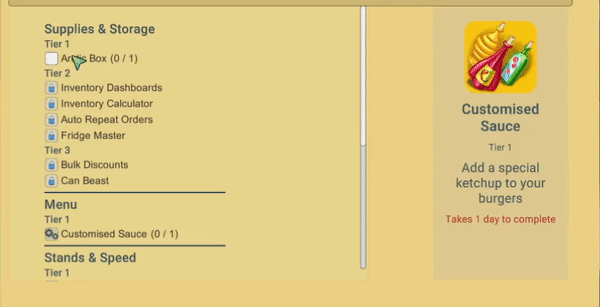
The customers tree logic will be implemented in the following days.
Spot & Pathing Updates
Let’s revisit the customer pathing system we touched on in a previous update. Recall we designed it to enable customers find the shortest path to a stand.
The image below shows the relevant aspects for this update:
- The stand is marked in red, with its range shown in transparent red.
- The path followed by customers is highlighted in blue, and the green squares mark intersection points where they can change direction.
- At the yellow decision point, customers decide whether to buy a burger based on their collision with the stand range.
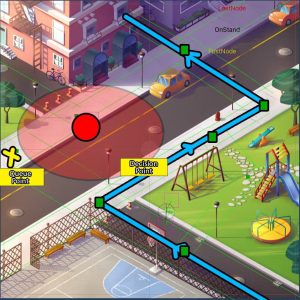
Overtime, we noticed that some stand spots, particularly those farther from customer path intersections, had lower foot traffic..
We’ve now moved two of the affected stand spots in Noisy Playground and Street Corner to improve their performance.
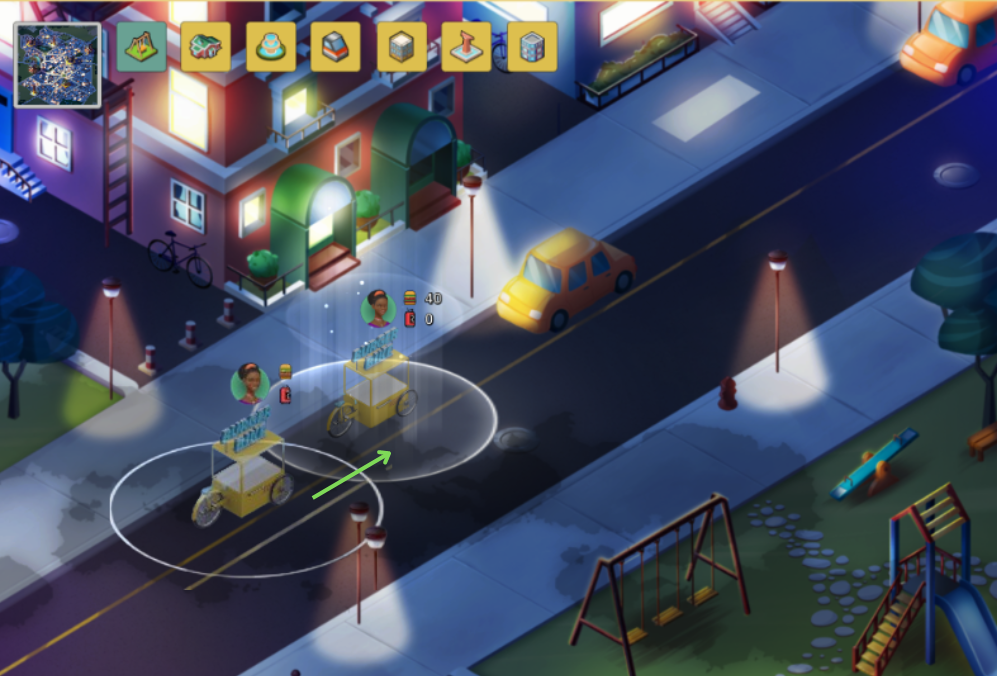
For Street Corner, it was a slightly bigger move.
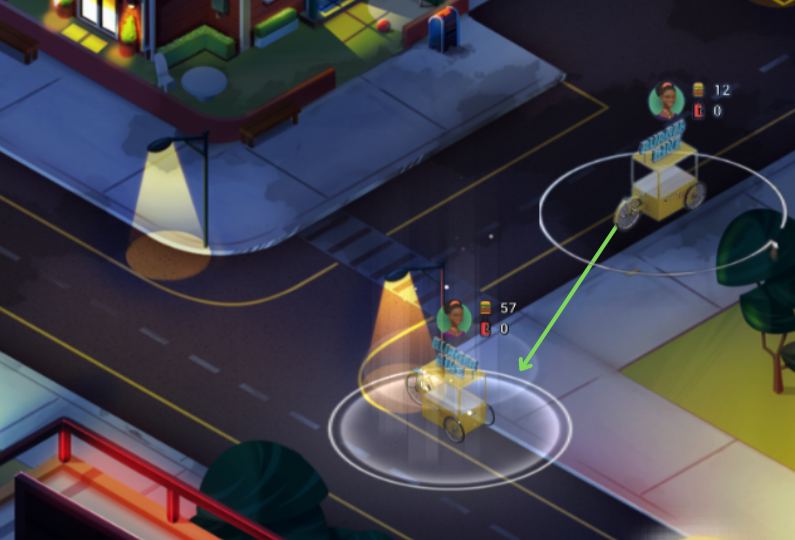
Additionally, we’ve optimized the intersection points to ensure better foot traffic across these stands in both locations.
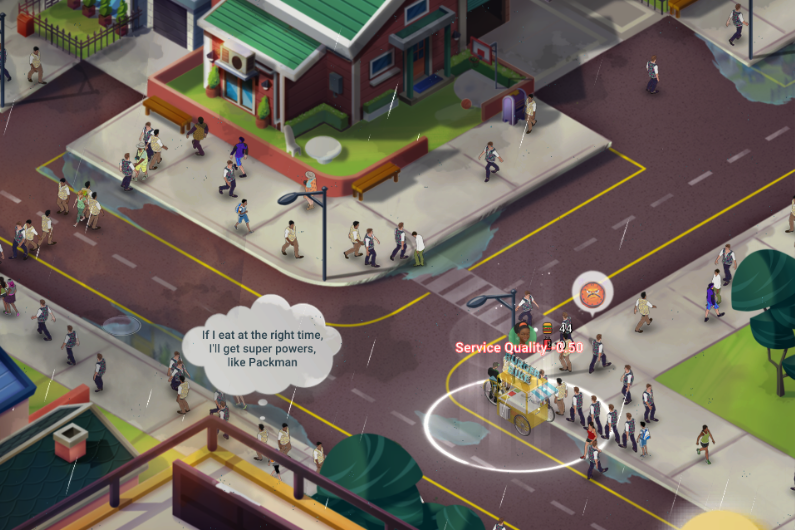
We will only know if these changes are effective after thoroughly testing business performance through different conditions.
So, fingers crossed for an update on how this pans out in the coming weeks.
We’d love to hear your thoughts on these updates! Reply to this email 📧 or chat with us on Discord. 💪
And that’s a wrap for today. Cheers 🥂
Don’t forget to Wishlist the game if you haven’t!
Live Long and Prosper 👋,
Kunal & Team
Follow For More
17 November 2023
New Updates: Classic Phones & Vehicle Management
Greetings, 👋
It’s another exciting update on our progress with Business Heroes. From retro tech to better vehicle management, we’ve got some gist for you!
So, grab a burger 🍔 and let’s get to it, shall we?
It’s NOTAKIA? 😲
Say hello to the latest gadget in your arsenal – the NOTAKIA mobile phone! Since the era of snail mail 📭 is long gone, Master Lee is now sending your missions via text message.
But why this ancient phone, you ask? 😆
Master Lee’s wallet might be bursting at the seams, but he is as frugal as a penny pincher! He’d sooner count every grain in a rice sack than splurge on the latest model of anything. 🤦
This mobile phone 📱 is more than just a means of communication – it’s a testament to his legendary thriftiness.
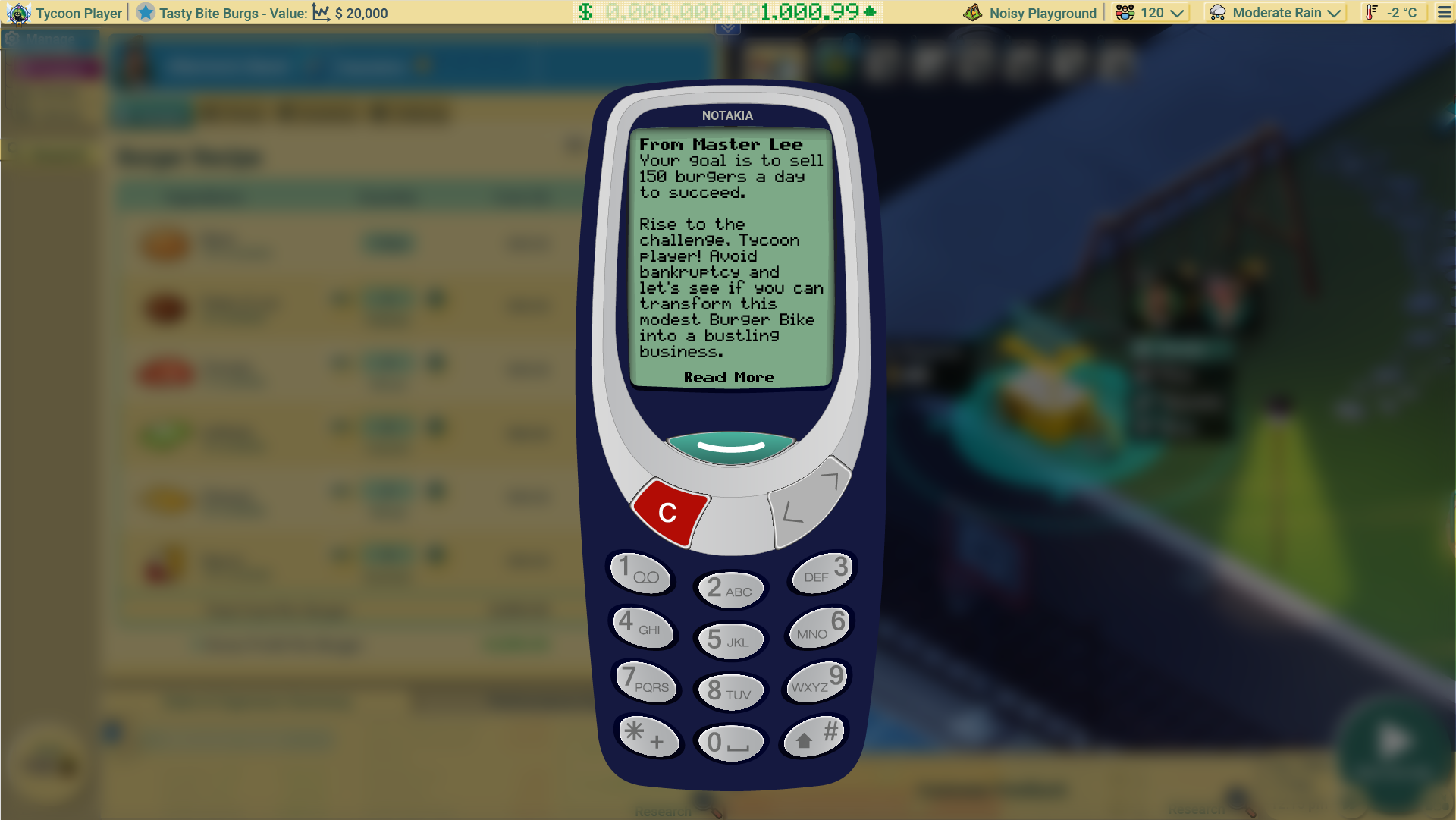
Interactive buttons make reading the message a breeze, allowing you to easily scroll ⬆️⬇️, select, and exit.
Plus, Master Lee has hidden some secrets in there too! 😉
And when you’re done, the phone conveniently gets tucked away to the bottom left of your management screen.
Confirm Before You Upgrade ✅
Upgrading your vehicle just got safer. We’ve introduced a confirmation screen for the Upgrade Vehicle function.
No more accidental upgrades – we’ve got you covered.
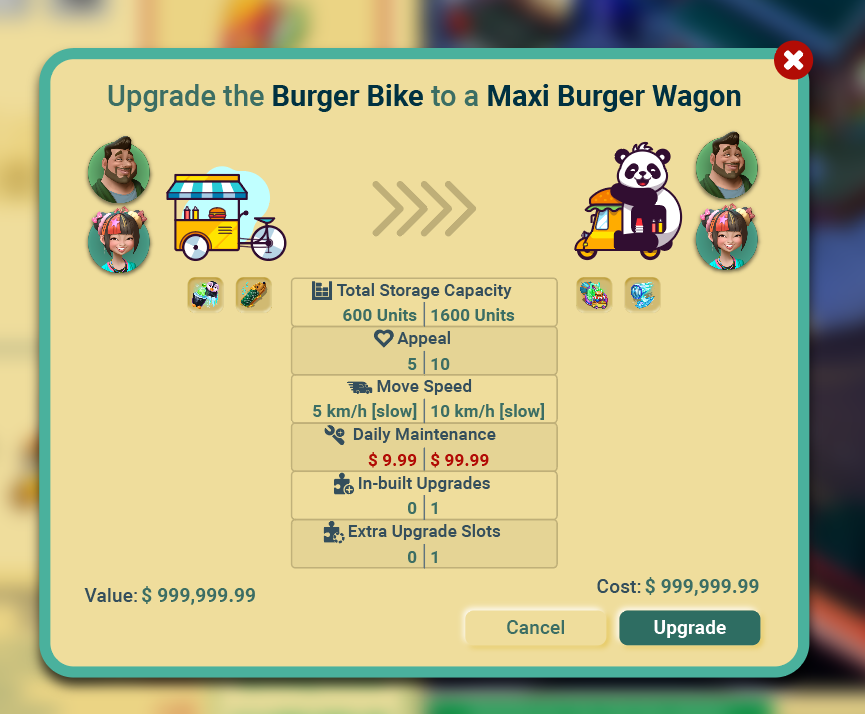
Also, you’ll see a comparison of the old and new vehicle specs, helping you make the smartest upgrade choices.
Streamlined Vehicle Info Section ⚙️
Efficiency is critical, and that’s why we’ve combined the info section with the sell stand function.
Fewer tabs mean fewer clicks, optimizing your gameplay experience.
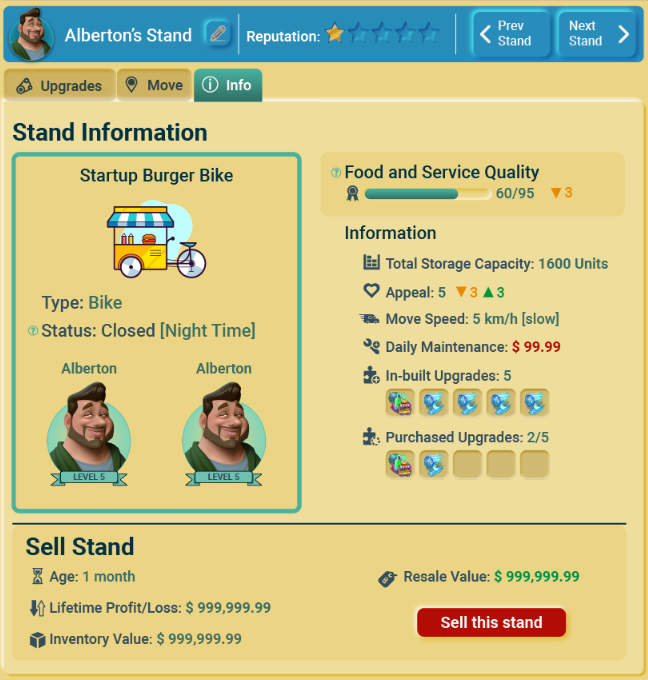
We’d love to hear your thoughts on these new features! Reply to this email 📧 or chat with us on Discord. 💪
And that’s a wrap for today. Cheers 🥂
Don’t forget to Wishlist the game if you haven’t!
Live Long and Prosper 👋,
Kunal & Team
Follow For More
3 November 2023
New Name, New View, New Video! 😄
Greetings, 👋
It’s time for another update on our progress in creating Business Heroes. As usual, we are bringing all that behind-the-scenes goodness. 😋
Remember, your contributions and feedback are our secret recipe for success. Please keep them coming! 😍
You can reply to this email 📧 or chat with us on Discord. 💪
Trading Dev Hats for Branding Caps! 😉
For those who haven’t joined our Discord (seriously, get in there!), we donned our branding caps to change a portion of the game’s name.
The Food Truck Simulation phrase not only felt too serious and academic, but we also recognized the need to differentiate ourselves from other Food Truck Tycoon and Food Truck Simulator titles.
We wanted something that sufficiently conveyed feelings of fun, reward, and achievement to our players.
After burning through numerous creative suggestions, from playful puns like Business Heroes: Patty Party to outrageously hilarious names like Business Heroes: Blablabla (a personal favourite of mine), we identified the top choice after two polls.
And the new name is…drum roll please 🥁…
Business Heroes: Street Grub! 🎉🥳
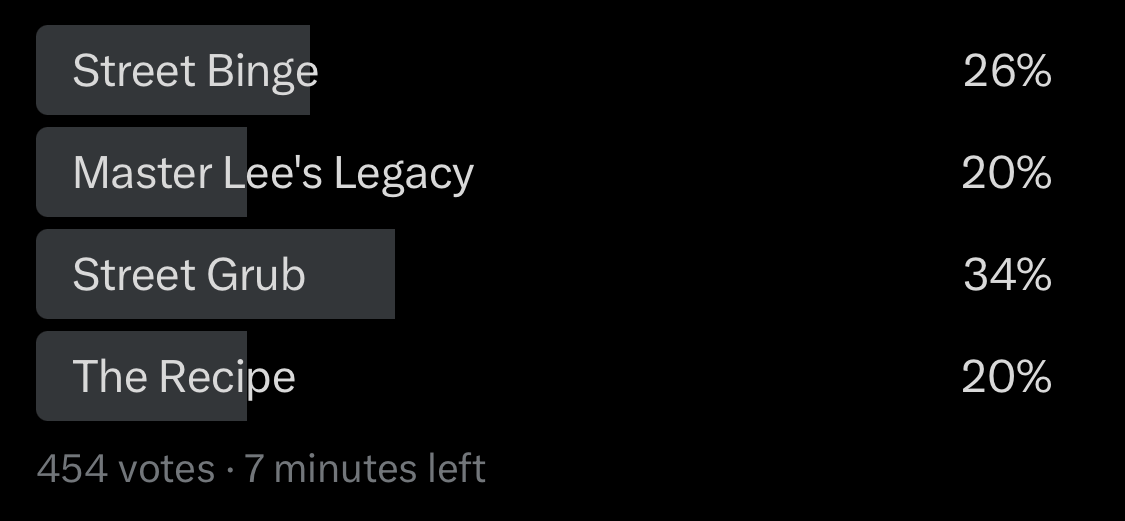
Keep your eyes peeled for brand-new logos and such in the coming weeks. 😄
New City View UI 🗺️
We recently completed the City View UI, and we know you’d be itching to see it. Here is how the night time view looks with most of the features unresearched.
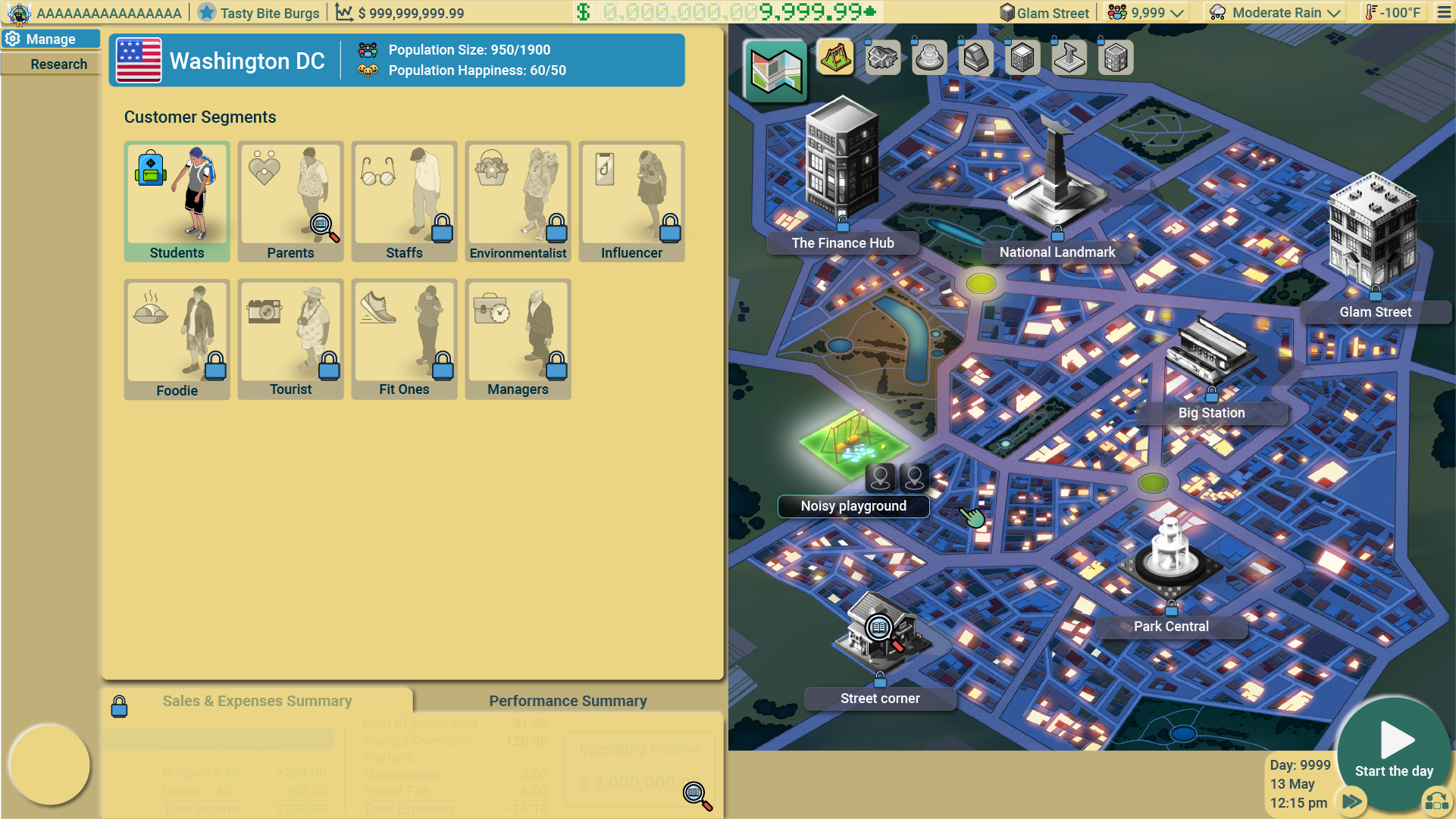
With many of the features researched:
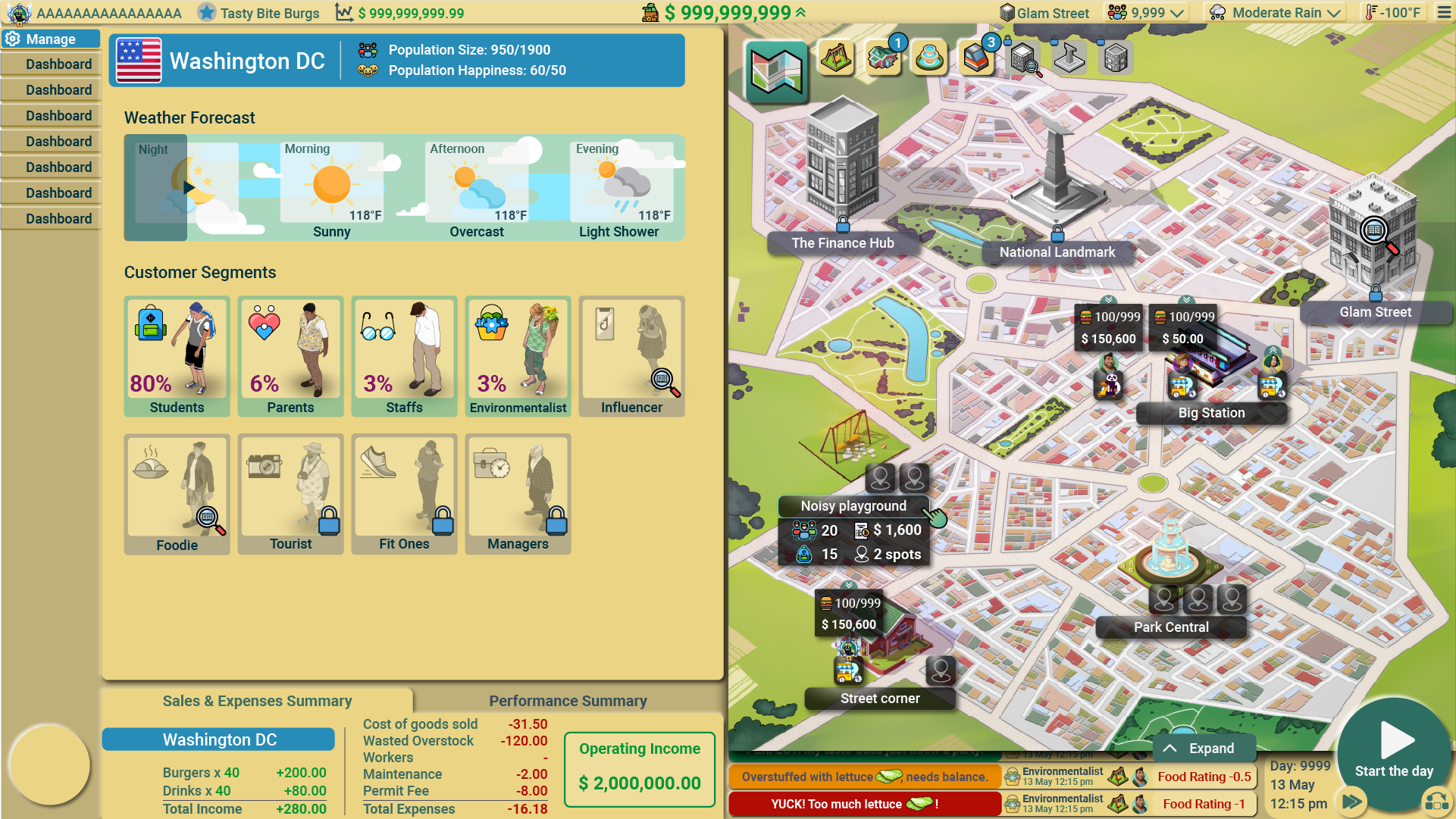
Grow with Laz the Burger Boss 🎮
Laz isn’t just flipping burgers; he’s flipping fortunes! Catch his 10-minute business escapades on YouTube as he chases a crispy $250,000 goal in Business Heroes.
Watch him attempt to recover from a disastrous financial pickle in his last episode.🍔💸

Don’t forget to like, comment, and hit that subscribe button if you’re loving the adventure. 😍
And that’s a wrap for today. Cheers 🥂
Don’t forget to Wishlist the game if you haven’t!
Live Long and Prosper 👋,
Kunal & Team
Follow For More
20 October 2023
Ordering UI, Balances, & Upgrades Management 🛠️
Greetings, 👋
Welcome to a brand new episode of your update on our progress. We will share some balances we are making and conclude by looking at the latest upgrade management flow.
As always, we are eager to read your contributions and get your feedback on these changes. You can share your thoughts by replying to this email 📧 or joining us on Discord. 👍
But first, here’s the latest version of the ordering user interface. 🛒
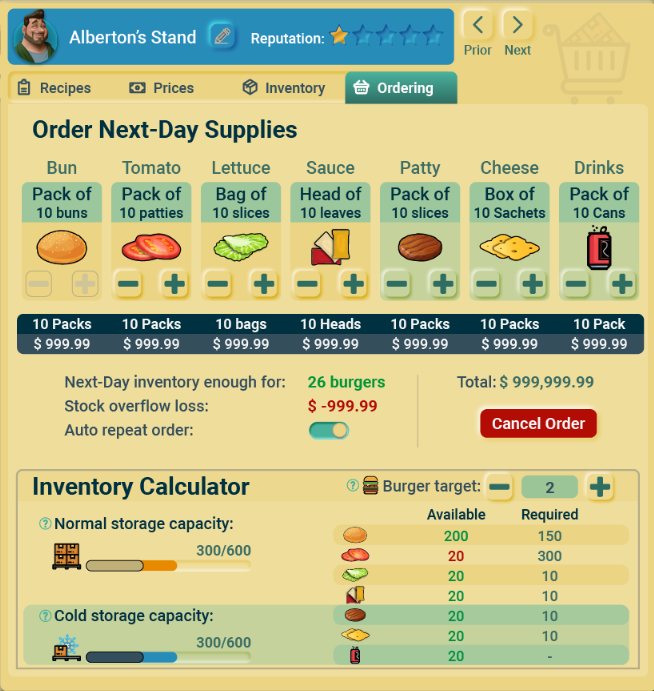
Balancing ⚖️
- Expiry: Recall that besides storing drinks, cold storage extends the shelf life of your patties and cheese? Without cold storage, your ingredients will expire after just one day. However, with cold storage, patties and cheese can last up to three days!
- Storage: Previously, storage management was not a big part of the game play mechanic. That’s because the storage was too large to be a consideration. In the new version, storage will be smaller and easier to max out.
Hopefully, this will enhance your resource management experience in the game.
- Students: The Student segment has always had the highest price sensitivity. But with the introduction of customer segment research/unlock, it’s now tougher to be profitable while serving Students.
To mitigate this, we are reducing their price sensitivity so they can buy at slightly higher prices, and you can be profitable.
Upgrades Management 🛠️
Buying and selling stand upgrades was another process some players needed clarification on. 🤔 Because of how we displayed the upgrades, players didn’t know they could be resold after purchase (albeit at a discounted rate after 24 hours).
Also, some missed the effects ⬆️ ⬇️ of the new upgrades on their business because that data was only available in the upgrade’s tooltips. 💬
We fixed this in the new design by adding an area for upgrade selection that shows the description of the upgrade, it’s effects, and price.
Here’s how the information architecture currently looks:
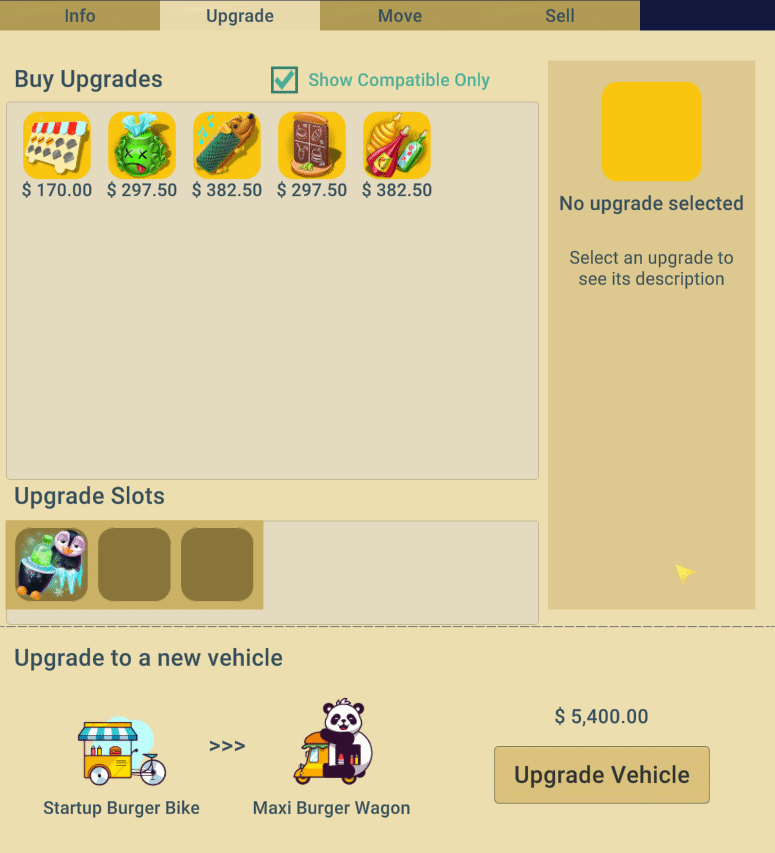
Adding a buy and sell button to this area makes missing the sell upgrade function and price impossible.
We also improved the presentation of the Vehicle Upgrade function, making it more explicit and accessible.
We retained the separation between the Upgrade Vehicle and the Sell Vehicle area from the previous design. That’s because Vehicles can’t be downgraded ⬇️, only sold. 💰
Selling a vehicle and its related costs is a decision that requires its own view so players can see all the data 🔢 they need.
And that’s a wrap for today. Cheers 🥂
Don’t forget to Wishlist the game if you haven’t!
Live Long and Prosper 👋,
Kunal & Team